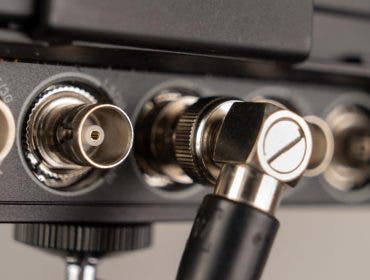When social media first appeared, everyone rushed in to create an account. Photographers almost immediately discovered the benefits of sharing their work on Facebook, Instagram, or similar social media channels. It was easier than ever to showcase their photographs and reach an eclectic worldwide audience. However, most of them created a personal account, far from the requirements of a professional photography business, and managed it more or less consistently or efficiently.
If you are an established professional photographer in need of a social media marketing makeover, here are 20 ways to get the attention you deserve and increase your audience. We’ve divided them into categories to clarify what aspects you need to address.
Branding
1. About Me Posts
Overlooked by many, a personal and artistic statement can boost your social media professional account. It lets people know who you are, your values and artistic voice, your struggles and challenges. Add a statement to your profile and update it anytime you consider it doesn’t represent you anymore. Speak in the first person, but don’t transform it into a detailed biography.
You may also want to post something about you from time to time. For example, the reasons for starting a new project or choosing a particular holiday destination, your mood before a photo session, your wanderings looking for the next photo shoot location, etc.
2. Behind-the-Scenes Posts
Behind-the-scenes posts help you showcase your workflow and tell a story. Sharing your best photographs is fine; sharing the challenges you faced in order to take them is even better. Speak about what you’ve learned, how you’ve adapted to the process, and what you’ve taken from each photo session or encounter.

3. Education
Let people know your credentials and what recommends you as a professional photographer. It may be an art Master’s Degree, photography courses and workshops, apprenticeship around a famous photographer, or any other form of education. Like with the about me posts, you can keep your audience up to date with your latest education-related goals.
4. Achievements
Sharing professional achievements with your social media audience is a must. Consider posting about collective exhibitions and photo books you are a part of. Let people know when you receive awards, are featured in magazines (offline and online), or reach an important milestone (e.g., your first commercial project, your 100th client, etc.).

Networking
5. Communities
Social media success is based on large communities with people who distribute your posts, comment regularly, and refer to you in their posts. They are your loyal followers. So, focus on finding the right communities for your photography. It doesn’t have to be a single one; you can enter multiple communities. For example, a landscape photographer may be part of the community around their gear brand (e.g., Nikon, Canon, etc.), a landscape photography association, a National Geographic fan group, and their local tourist center group.
6. Business Tagging
Even though they may not be photography-related businesses, consider tagging businesses you are working with and for in your social media posts. Chances are the tagged businesses will interact with your posts and bring more followers. In addition, you build trust, expand your network, and maintain a connection. For example, you can tag the venue where you had a photo shoot, the caterer who provided the food at a wedding you photographed, the studio that prints your photos, or the company that hired you to take business headshots for their staff.

7. Collaboration with Peers
It’s not unusual to collaborate with other photographers for large projects, common exhibitions, and collective online galleries. Stay in touch and help each other promote your social media channels. Enter discussion groups and share your experience on gear, lighting, photoshoot locations, and workflow.
8. Gear Reviews
Gear reviews are a great way to get in touch with photo equipment manufacturers or vendors, start conversations with your peers, and diversify your social media posts. Remember to tag related businesses and engage your audience by asking for feedback and opinions on the matter.

Content Management
9. Structure
Structuring your work is part of the artistic process. Consider using separate albums for different projects, aesthetics, or subject matters, building a narrative line from one photo to another, sharing photo series, and consistently labeling your work using tags and hashtags.
10. Content Plan
It helps with consistency to plan your posts and even schedule them ahead of time. Social media algorithms will keep you in the loop if you develop a healthy pattern of posting. For example, you may have 20 posts as a result of a photo session and then nothing for two weeks. Try to distribute your content evenly and keep your audience engaged at all times.
11. Visual Consistency
Your brand as a professional photographer is a cohesive visual identity and artistic voice. Your viewers expect the visual style you’ve accustomed them to, which means whatever you post on social media should have visual consistency and enhance your branding. For example, use the same editing style, technique, aesthetics, subject matters, and lighting design. Make your work recognizable and easily linkable to your photography.

12. Personal Style
Being visually consistent doesn’t mean you have to produce the same work every time or use a generic style that appeals to a larger audience. You need a personal style in your photography as well as in your social media. For example, you may use humor to tell the stories behind the camera, raise awareness for a particular cause you are deeply engaged with, accompany your work with quotes from your favorite writers, or post something green every Thursday.
13. Content Balance
Balance the type of content you post to produce an interesting feed. For example, you may decide to use 50% of your post to showcase your photographs, 10% for behind-the-scenes posts, 20% for networking, and 20% for branding. Alternate between different types of posts and build a dynamic social media feed that keeps your audience eager to find out more.
14. Trends
Incorporate social media trends into your feed to benefit from search rushes. Of course, choose those that align with your values, photography style, and personal style. For example, at the beginning of summer, people tend to seek holiday destinations. Use this annual trend to post photographs that relate to vacations.

15. Content Diversity
As a professional photographer, your portfolio should be cohesive and visually consistent but also diverse. Alternate social media posts addressing different subject matters or themes to keep your followers engaged and interested. For example, a nature photographer may alternate between pictures of flowers and plants, mushrooms, insects, and so on. A wildlife photographer may alternate between species living on different continents.
Social Media Management
16. Audience Reports
Audience reports are a great way to know your audience. They provide valuable insights you can use to improve your social media channels. For example, reports tell you which are the most seen posts, with what type of content your followers interact more, what devices your public prefers, and many other details. Create more of your popular content type.

17. Feedback
Encourage your public to provide feedback by placing questions and calls to action inside your posts. A simple ending like “What do you think?” may start a conversation. Ensure you answer people’s comments and respectfully interact with them. Acknowledge their opinions even when you don’t agree with them. Knowing what people don’t like about your photography is as useful as knowing what they do like.
18. Audience Engagement
There are many ways to increase and maintain audience engagement. Posting regularly, diversifying the content, including calls to action and questions in your posts, and creating events and/or questionnaires are just some of them. Use the method that fits your audience profile.
19. Algorithm Power
Learning how social media algorithms work is a time-consuming but brilliant way to improve your social media presence. By reading between the lines of the algorithm, you can find out what type of photographs get top placements, what tags and hashtags you should use, what’s on trend at the moment, and even what orientation and aspect ratio your photos should have.
20. Content Promoting
If nothing works and your social media account still needs a push, consider promoting it for a while. All social media platforms offer the option of sponsored posts, in which you pay to have your posts reach a larger audience. Usually, you set a budget and a few criteria to filter the audience, and the algorithms take care of the rest. However, make sure you target the right audience with promotion to avoid it being a short-term boost.
Conclusion
Social media can be extremely beneficial for your photography, helping you connect with galleries and have your photos exhibited, bringing you clients and fans, and acting as a way of gathering feedback. Make social media marketing a priority and create a workflow that suits you without becoming more important or time-consuming than photography itself. If you don’t have the time or the energy to do it yourself, consider hiring a professional social media marketing agency or freelancer to do it for you.






